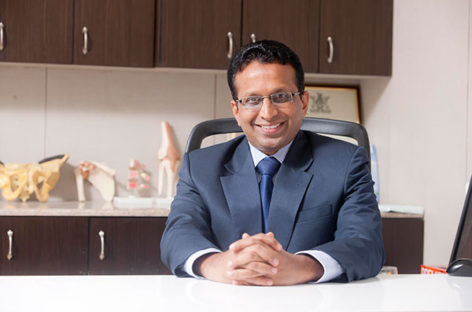Orthopedics
Vitamin D Deficiency Causes Osteomalacia and Rickets
Fragile and soft bones in the human skeletal system is a sign of Osteomalacia disorder in adults and Rickets in children. Osteomalacia and Rickets occur when the mineralization of the
Read MoreAll About Joint Replacement: Interview with Dr. Aravindan Selvaraj
A veteran in the field of joint replacement surgery, Dr. Aravindan Selvaraj – Chief Orthopaedic Surgeon and Executive Director, Kauvery Hospital is a Dr. D.A Patel gold medal awardee for
Read MoreHow Long Do Hip Replacements Last?
Having examined the hip replacement procedure in the previous part of this blog, it is now time to look at the things you can and cannot do immediately following the
Read MoreHip Replacement [Part – 1]
Hip replacement surgery is a common procedure to treat severe cases of osteoarthritis and injuries (fractures) that affect the hip joint, resulting in pain and reduced mobility. The procedure involves
Read MoreOsteoarthritis – Age Related Disorder
Types of Arthritis There are more than 100 known types of arthritis of which the following top three types of arthritis most commonly affect people. 1. Osteoarthritis 2. Rheumatoid Arthritis
Read MoreWhat to Expect from Knee Replacement?
Knee arthroplasty or knee replacement surgery is for those whose knee joint has been badly destroyed which in turn causes chronic pain and impairment of functions. Knee arthroplasty is considered
Read MoreFrozen Shoulder: Factors, Stages, Treatments
Stiffness around the shoulder joint, debilitating pain and limited range of movement in the shoulder are all symptoms of “Frozen Shoulder” or “Adhesive Capsulitis”. The onset of this disorder is
Read MoreLook at the Heels on your Shoes
You may not think about your feet that often, way down there at the ends of your legs, but they’re an essential part of almost everything you do. Whether walking,
Read MoreFrozen Shoulder Is A Surgical Disease
Introduction In 1934, Codman described the frozen shoulder as a condition which is difficult to define, difficult to explain and difficult to treat. Codman’s description remained true until 10 years
Read More




![Hip_replacement_Image_3684-PH Hip Replacement [Part – 1]](https://www.kauveryhospital.com/blog/wp-content/uploads/2016/01/Hip_replacement_Image_3684-PH-472x312_c.jpg)




